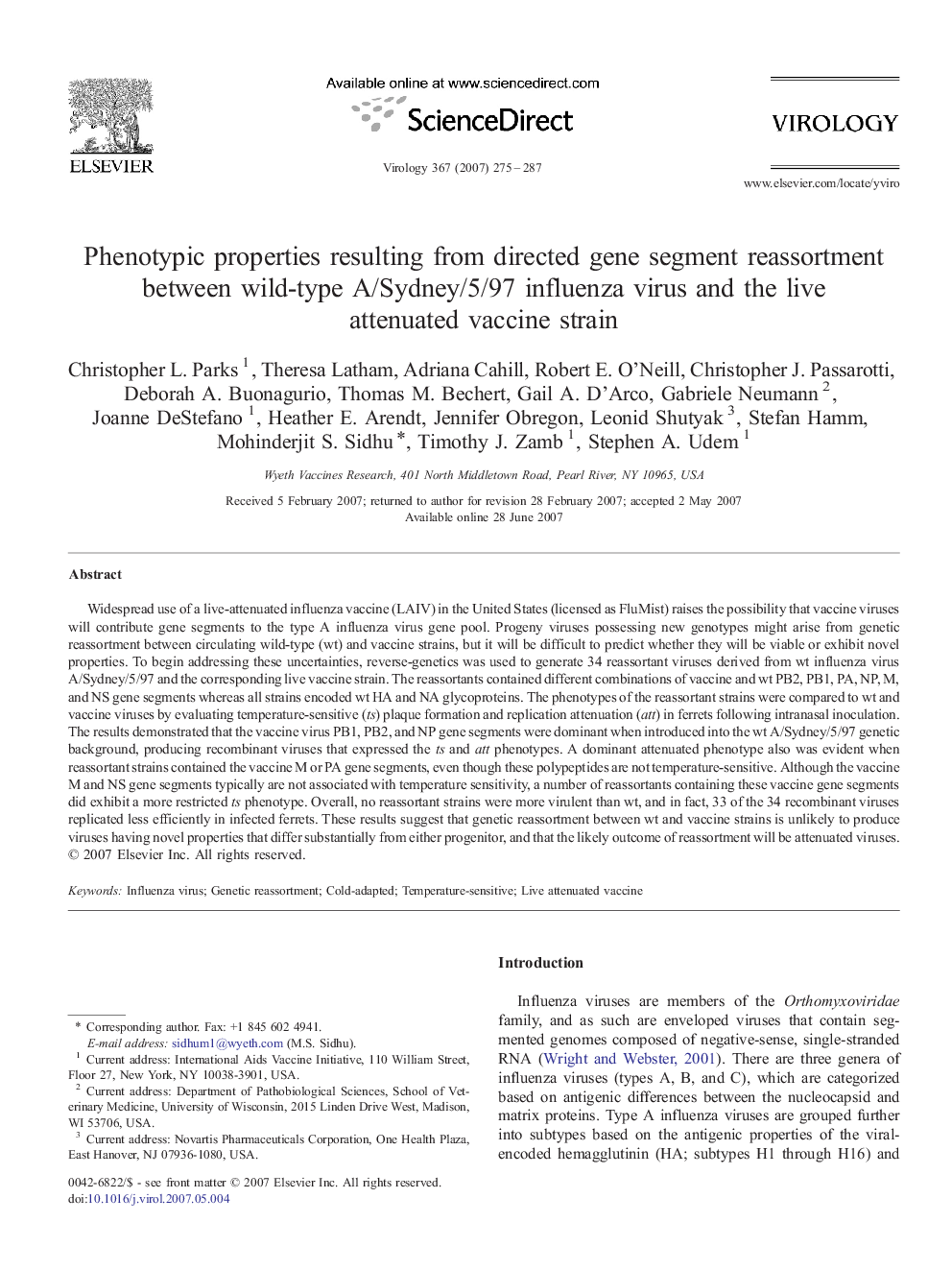| کد مقاله | کد نشریه | سال انتشار | مقاله انگلیسی | نسخه تمام متن |
|---|---|---|---|---|
| 3425981 | 1227309 | 2007 | 13 صفحه PDF | دانلود رایگان |

Widespread use of a live-attenuated influenza vaccine (LAIV) in the United States (licensed as FluMist) raises the possibility that vaccine viruses will contribute gene segments to the type A influenza virus gene pool. Progeny viruses possessing new genotypes might arise from genetic reassortment between circulating wild-type (wt) and vaccine strains, but it will be difficult to predict whether they will be viable or exhibit novel properties. To begin addressing these uncertainties, reverse-genetics was used to generate 34 reassortant viruses derived from wt influenza virus A/Sydney/5/97 and the corresponding live vaccine strain. The reassortants contained different combinations of vaccine and wt PB2, PB1, PA, NP, M, and NS gene segments whereas all strains encoded wt HA and NA glycoproteins. The phenotypes of the reassortant strains were compared to wt and vaccine viruses by evaluating temperature-sensitive (ts) plaque formation and replication attenuation (att) in ferrets following intranasal inoculation. The results demonstrated that the vaccine virus PB1, PB2, and NP gene segments were dominant when introduced into the wt A/Sydney/5/97 genetic background, producing recombinant viruses that expressed the ts and att phenotypes. A dominant attenuated phenotype also was evident when reassortant strains contained the vaccine M or PA gene segments, even though these polypeptides are not temperature-sensitive. Although the vaccine M and NS gene segments typically are not associated with temperature sensitivity, a number of reassortants containing these vaccine gene segments did exhibit a more restricted ts phenotype. Overall, no reassortant strains were more virulent than wt, and in fact, 33 of the 34 recombinant viruses replicated less efficiently in infected ferrets. These results suggest that genetic reassortment between wt and vaccine strains is unlikely to produce viruses having novel properties that differ substantially from either progenitor, and that the likely outcome of reassortment will be attenuated viruses.
Journal: Virology - Volume 367, Issue 2, 25 October 2007, Pages 275–287